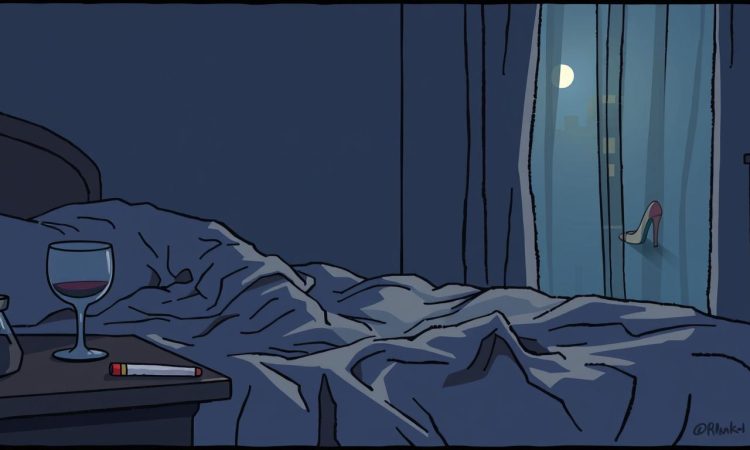
Have you ever wondered if subtle changes in your marriage could mean something deeper? Behavioral shifts often hold the key to understanding what’s happening in a relationship. Recognizing these clues early can help address issues before they escalate.
Experts like Angela Ficken and Rychel Johnson highlight that increased secrecy or sudden changes in appearance might signal a problem. These shifts could point to infidelity, but they should always be considered within the broader context of the marriage.
This article will explore various red flags, from communication patterns to unexplained absences. While these signs of cheating are concerning, they’re not definitive proof. Understanding them can empower you to navigate challenges in your relationship with clarity and confidence.
On this Page:
- 1 Introduction to Cheating and Infidelity
- 2 Understanding Behavioral Changes
- 3 Recognizing “signs your wife is cheating”
- 4 Technology and Social Media Clues
- 5 Alterations in Daily Routines
- 6 Appearance and Personal Grooming Changes
- 7 Financial Anomalies in the Marriage
- 8 Communication Patterns and Defensive Behavior
- 9 Shifts in Intimacy and Physical Connection
- 10 Other Subtle Red Flags to Consider
- 11 Conclusion
Introduction to Cheating and Infidelity
Infidelity often shakes the foundation of trust in a marriage. It’s a complex issue that can stem from emotional disconnection, unmet needs, or external stressors. Understanding what constitutes cheating and how it impacts a relationship is the first step toward addressing it.
Cheating isn’t just about physical betrayal. Emotional infidelity, such as forming a deep connection with someone outside the marriage, can be equally damaging. Both forms erode trust, leaving the betrayed spouse feeling hurt and confused.
Complexities in Marital Trust
Trust is the cornerstone of any healthy marriage. When a spouse cheats, that trust is broken, often leading to feelings of betrayal and insecurity. Rebuilding it requires time, effort, and open communication.
Experts note that infidelity can sometimes be a symptom of deeper issues in the relationship. Financial stress, lack of intimacy, or unresolved conflicts may contribute to a spouse seeking connection elsewhere. Recognizing these underlying factors is crucial for healing.
The Impact of Infidelity on Emotions
The emotional toll of infidelity can be overwhelming. Feelings of guilt, anger, and sadness are common for both partners. The betrayed spouse may experience a roller coaster of emotions, from disbelief to intense sadness.
Stress and anxiety often accompany suspicions of cheating. A spouse’s sudden change in behavior, such as increased secrecy or unexplained absences, can serve as a red flag. Over time, these small signs may compound, revealing larger issues in the relationship.
In the following sections, we’ll explore specific behaviors that may indicate infidelity. By understanding these signs, you can approach the situation with clarity and confidence.
Understanding Behavioral Changes
Behavioral shifts can reveal hidden truths in a relationship. When a partner’s actions change unexpectedly, it’s natural to wonder what’s behind it. These alterations often serve as clues to deeper emotional or relational issues.
Increased Secrecy
One of the most noticeable changes is increased secrecy. A spouse might start guarding their phone or avoiding eye contact during conversations. These actions can signal discomfort or a desire to hide something.
For example, sudden password changes or reluctance to share details about their day might indicate a problem. While privacy is important, a shift toward secrecy can be a red flag.
Erratic Schedules
Another common sign is erratic schedules. A partner who frequently changes plans or has unexplained absences may be struggling with internal conflict. These shifts often happen quickly, pointing to a high behavioral “delta.”
For instance, working late more often or making excuses to leave the house could suggest an affair. It’s essential to look for patterns rather than isolated incidents.
Mood Swings and Emotional Shifts
Mood swings and emotional shifts can also indicate underlying issues. A spouse involved in an affair might experience guilt or stress, leading to unpredictable behavior.
They may seem distant one moment and overly affectionate the next. These emotional fluctuations often reflect internal turmoil. Recognizing these signs can help address the root cause of the behavior.
Recognizing “signs your wife is cheating”
Noticing shifts in emotional closeness can be a key indicator of underlying issues. When a partner becomes distant or starts focusing heavily on their appearance, it’s natural to wonder what’s behind these changes. These behaviors, while not definitive proof, often serve as early clues to deeper concerns in the relationship.
Unexpected Emotional Distance
One of the first signs of trouble is unexpected emotional distance. A partner who once shared their thoughts and feelings openly may suddenly become withdrawn. They might avoid deep conversations or seem disinterested in spending quality time together.
This shift can leave the other spouse feeling confused and disconnected. Experts suggest that emotional distance often stems from unresolved conflicts or external stressors. When combined with other red flags, it becomes harder to dismiss as a temporary phase.
Sudden Preoccupation with Appearance
Another noticeable change is a sudden preoccupation with appearance. A partner might start buying new clothes, hitting the gym more often, or paying extra attention to grooming. While self-care is important, a drastic shift in behavior can signal an effort to impress someone new.
Research shows that 56% of individuals noticed such changes when suspecting infidelity. This behavior, especially when paired with emotional distance, often points to deeper issues in the marriage.
While one sign alone may not be conclusive, the combination of emotional distance and appearance changes creates a stronger case for suspicion. Recognizing these patterns early can help address concerns before they escalate.
Technology and Social Media Clues
Technology often plays a role in uncovering hidden truths in relationships. In today’s digital age, phones and social media can reveal patterns that might otherwise go unnoticed. When a partner becomes unusually protective of their devices or starts behaving differently online, it’s natural to wonder what’s behind these changes.
Overprotective Phone Behavior
One of the most common digital clues is overprotective phone behavior. A partner might suddenly guard their device, change passwords, or avoid leaving it unattended. For example, they may turn their screen away when you’re nearby or quickly close apps when you enter the room.
Deleting text messages or call logs is another red flag. While privacy is important, a shift toward secrecy can signal something deeper. Experts note that 75% of individuals report noticing sudden changes in phone habits as a potential warning sign.
Mysterious Social Media Activity
Social media can also provide insights into a partner’s behavior. Increased activity, especially with new contacts, might indicate hidden connections. A partner might start using secretive apps or platforms designed to hide messages and photos.
For instance, apps like Calculator Pro+ or Keepsafe Photo Vault are often used to conceal incriminating content. Observing these patterns without invading privacy is key. Open communication can help address concerns before they escalate.
Alterations in Daily Routines
Routine changes can sometimes reveal more than meets the eye. When a spouse’s daily habits shift unexpectedly, it’s natural to wonder what’s behind these adjustments. While minor schedule tweaks may seem harmless, they can signal deeper issues in the relationship.
Experts note that 75% of individuals who suspect infidelity observe significant changes in daily routines. These alterations often include unexplained absences or vague excuses for time away from home. Recognizing these patterns can help address concerns before they escalate.
Unexplained Excuses and Schedule Changes
One of the most common red flags is a sudden influx of unexplained excuses. A spouse might claim to have last-minute work trips or unexpected outings with friends. While these reasons may seem valid at first, repeated occurrences can raise suspicions.
For example, a partner who frequently changes plans or avoids discussing their schedule might be hiding something. These shifts in behavior often point to internal conflict or external distractions. It’s essential to look for consistency rather than reacting to isolated incidents.
Over time, these small changes can build a compelling pattern. Observing them carefully can provide clarity and help address underlying issues in the relationship.
Appearance and Personal Grooming Changes
Subtle shifts in personal habits can sometimes reveal deeper truths. When a partner suddenly pays more attention to their appearance, it’s natural to wonder what’s behind the change. While self-care is important, drastic alterations in grooming or style might signal more than just a new phase in life.
New Wardrobe Choices
A sudden interest in updating a wardrobe can be more than a fashion upgrade. If a partner starts buying new clothes or experimenting with styles they’ve never worn before, it might be worth noting. This change could be an effort to impress someone new or to feel more confident in unfamiliar social settings.
For example, a partner who never cared much about fashion might suddenly invest in trendy outfits. While this alone isn’t proof of anything, it’s worth considering alongside other behavioral shifts. Context is key—what might be normal for one person could be a red flag for another.
Increased Workout Routines
Another noticeable change is a sudden focus on fitness. A partner who starts hitting the gym more often or adopting new workout routines might be aiming to improve their physical appearance. While this can be a positive step, it’s worth asking why the change occurred now.
For instance, a partner who was previously inactive might suddenly dedicate hours to exercise. This activity, especially when paired with other changes, could indicate an effort to impress someone outside the relationship. Open communication can help clarify the motivation behind these shifts.
Ultimately, changes in appearance and grooming are often part of a larger pattern. Observing them carefully can provide insights into what’s happening in the relationship.
Financial Anomalies in the Marriage
Financial shifts in a marriage can sometimes reveal more than just budget changes. Unexplained expenses or sudden spending patterns might hint at deeper issues. While money matters are often overlooked, they can uncover hidden truths about a partner’s behavior.
When finances don’t add up, it’s natural to wonder what’s behind the discrepancies. Hidden expenses or unaccounted purchases could serve as a warning sign. For example, a spouse might start making secret transactions or spending more than usual without a clear reason.
Hidden Expenses
One common red flag is hidden expenses. A partner might open new accounts or use cash to avoid leaving a paper trail. They could also make purchases that don’t align with their usual habits, such as buying gifts or booking trips without explanation.
Small inconsistencies in spending can accumulate into a larger pattern. Over time, these financial anomalies might point to an affair or other hidden activities. It’s essential to look for consistency rather than reacting to isolated incidents.
Unaccounted Purchases
Unaccounted purchases are another indicator of potential trouble. A spouse might start buying items that don’t seem to fit their lifestyle or interests. For instance, they could purchase expensive jewelry or clothing without a clear reason.
These changes in spending habits often reflect a shift in priorities. When combined with other behavioral clues, they can create a compelling case for suspicion. Open communication is key to addressing these concerns before they escalate.
Ultimately, financial anomalies should be viewed alongside other signs. Discussing any financial concerns openly with your partner can help clarify the situation and rebuild trust in the marriage.
Communication Patterns and Defensive Behavior
Communication is the backbone of any relationship, but subtle shifts can reveal deeper issues. When a partner becomes evasive or defensive, it’s natural to question what’s being hidden. These changes in communication patterns often serve as red flags, pointing to potential problems in the relationship.
Evasive Responses
One of the most noticeable changes is evasive responses. A partner might avoid answering calls or give vague answers to straightforward questions. For example, they might deflect when asked about their day or provide inconsistent details about their whereabouts.
This behavior often correlates with feelings of guilt or a desire to avoid confrontation. Research shows that 65% of individuals who suspect infidelity report noticing such evasive patterns. Over time, these small shifts can build a case for deeper concerns.
Defensive Reactions
Another common sign is defensive behavior. A partner might react strongly to simple questions, accusing you of being overly suspicious. This defensiveness can be an attempt to cover up their actions or shift the focus away from their behavior.
For instance, they might become irritable when asked about their social media activity or new contacts. This reaction often stems from internal conflict or fear of being discovered. Tracking these patterns over time can help clarify whether they’re part of a larger issue.
Ultimately, changes in communication patterns are often a sign of deeper problems. Open and honest conversations can help address these concerns and rebuild trust in the relationship.
Shifts in Intimacy and Physical Connection
Intimacy is a cornerstone of any strong relationship, but shifts in it can reveal deeper issues. When physical or emotional closeness changes unexpectedly, it’s natural to wonder what’s behind it. These alterations often serve as clues to underlying challenges in the marriage.
Clinical data and expert opinions highlight that abrupt changes in intimacy and sexual behavior can reflect concerns like infidelity. Whether it’s a sudden decrease or an unexpected increase, these shifts are worth exploring. They often occur alongside emotional distancing, creating a complex dynamic in the relationship.
Reduced Affection
One of the most noticeable changes is reduced affection. A partner who once expressed love through physical touch or kind words might suddenly become distant. For example, they may stop holding hands, hugging, or saying “I love you” as often.
This shift can leave the other spouse feeling confused and disconnected. Studies show that 55% of individuals who cheat stop expressing affection verbally. While this alone isn’t proof of an affair, it’s a significant sign to consider within the broader context of the relationship.
Changes in Sexual Dynamics
Another red flag is a noticeable shift in sexual dynamics. A partner might become less interested in intimacy or, conversely, show an unexpected increase in desire. Both extremes can indicate underlying issues, such as guilt or a desire to compensate for an affair.
For instance, a spouse who was once consistent in their sexual behavior might suddenly avoid physical contact or become overly enthusiastic. These changes, especially when paired with emotional distance, often point to deeper concerns. Open communication is key to understanding and addressing these shifts.
Ultimately, changes in intimacy and physical connection are often part of a larger pattern. Observing them carefully can provide clarity and help navigate challenges in the relationship with confidence.
Other Subtle Red Flags to Consider
Sometimes, the smallest changes in behavior can reveal the most significant truths. While some clues are obvious, others are subtle and easy to overlook. These less overt signals can still provide valuable insights into what’s happening in a relationship.
Experts suggest that even minor shifts in how a person acts under pressure or when questioned can indicate a guilty conscience. These behavioral deltas, when combined with other clues, can paint a clearer picture of the situation. Let’s explore some of these less obvious yet telling signs.
Guilty Conscience Indicators
One subtle red flag is how a person reacts when questioned. They might become overly defensive or avoid giving a straight answer. For example, they could deflect questions about their day or become irritable when pressed for details.
Another indicator is a sudden change in body language. Avoiding eye contact, fidgeting, or seeming unusually nervous can signal discomfort. These reactions often stem from internal conflict or fear of being discovered.
Behavioral Deltas to Watch For
Small but consistent changes in behavior can also serve as clues. A person might start acting differently in familiar situations, such as becoming more secretive or distant. For instance, they could avoid discussing certain topics or seem less engaged in conversations.
Another delta to watch for is a shift in social activity. They might start spending more time with new friends or groups without explanation. While this alone isn’t proof of anything, it’s worth considering alongside other red flags.
Ultimately, these subtle signs are most meaningful when grouped together. Trusting your intuition and looking at the bigger picture can help you navigate the situation with clarity and confidence.
Conclusion
Understanding the complexities of a relationship can help navigate challenges with clarity. While no single sign is conclusive, recognizing patterns in behavior is the first step toward addressing concerns. Whether it’s emotional distance, financial anomalies, or shifts in communication, these cues can provide valuable insights.
If multiple red flags are present, seeking professional help or counseling may also be a constructive way forward. Addressing infidelity is never easy, but having clear information can guide decisions and foster healing. Open communication and support are key to rebuilding trust or choosing a new path.
Ultimately, awareness empowers us to take meaningful action. Whether you decide to work through the issue or explore other options, remember that clarity and understanding are the foundation for moving forward in life and relationships.










